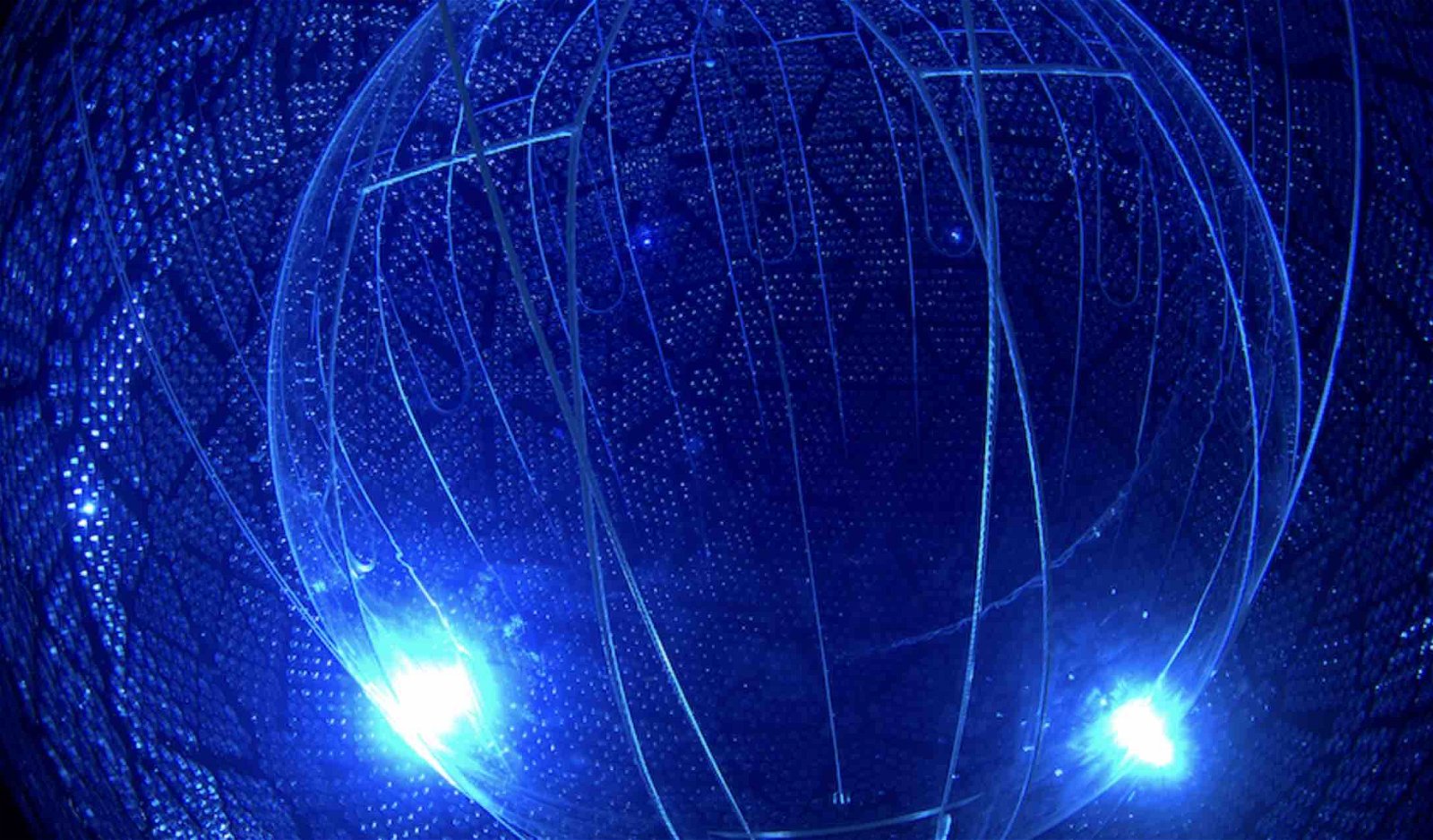A breakthrough in the detection of subatomic particles known as antineutrinos using pure water rather than a liquid scintillator has been made, according to an international team of scientists.
A variety of elementary subatomic particles possessing almost no mass, antineutrinos are the antimatter counterpart of the neutrino, the neutral subatomic particles that almost never interact with matter. While having the same minuscule amount of mass, antineutrinos have the opposite charge of neutrinos, and both subatomic particles are among the basic building blocks of matter.
Of particular interest, physicists believe antineutrinos could be a useful asset in the detection and monitoring of nuclear reactors and other nuclear activities occurring around the world, since they appear around areas where the decay of radioactive materials occurs.
Every second, an estimated ten septillion antineutrinos make their departure from Earth, a reality that was represented visually back in 2015 with a mapping effort that produced a global map of the planet’s antineutrino flux.
Now, the newest findings in cooperation with the Sudbury Neutrino Observation (SNO+) experiment, tucked away within a mine at Sudbury, Ontario, point to new ways that an array of large, cost-effective detectors can be constructed to aid in the effort to monitor nuclear proliferation.
Using Pure Water to Detect Antineutrinos
Approximately 150 miles away from the closest reactor, physicists with the SNO+ experiment report the successful detection of antineutrinos using pure water. In the past, such detections have required a liquid scintillator, which measures radioactivity by mixing a sample of the material and measuring the emission of photons the scintillator produces as electrons and other particles move through it.
“This analysis uses events with energies lower than in any previous analysis with a large water Cherenkov detector,” the authors state in the abstract of a paper describing the work, published in Physical Review Letters. Two different analytical methods were employed by the team to help make distinctions between reactor antineutrinos and background events comprising a period of 190 days, which they report “yield consistent evidence for antineutrinos” within the parameters defined by the team.
Joshua Klein, one of the authors of the new study, says that the team’s work “shows that very large detectors could be built to do this with just water.”
Klein added in a statement that the detection of antineutrinos using this new cost-effective method could have “practical applications as they can be used to monitor nuclear reactors and potentially detect the clandestine nuclear activities,” since reactors split atomic nuclei, a process which produces antineutrinos “as a result of radioactive beta decay from the reaction.”
“As such, nuclear reactors produce large amounts of antineutrinos and make them an ideal source for studying them,” Klein adds.
The team says that this new way of monitoring reactors allows the measurement of antineutrinos in ways that indicate “whether they are on or off,” and according to Klein, may even allow researchers the ability to discern “what nuclear fuel they are burning.”
Monitoring Nuclear Proliferation, and More
With Klein and his team’s new pure water antineutrino detection capability, a nuclear reactor at a distant location could be monitored for changes that might indicate a switch from mere power generation to the production of material for use in weapons of mass destruction. Using pure water to do so makes this task far more affordable, and therefore more easily implemented and with wider distribution globally.
Among the range of potential uses for such new detection methods, a few less conventional ideas also come to mind. In 2021, The Debrief reported on officials who spoke of an operations plan related to the detection of unidentified aerial phenomena (UAP) that “may have involved attempts to ‘coax’ UAP into showing up,” possibly with relation to some of these objects and their purported “interest in nuclear materials.” Hypothetically, any sources of anomalous antineutrino fluxes–possibly even those which may relate to UAP–could potentially be more easily detected thanks to the team’s recent findings.
“Reactor antineutrinos are very low in energy,” Klein emphasised in a recent Pennsylvannia University release. “[A] detector must be very clean from even trace amounts of radioactivity.”
“In addition, the detector must be able to ‘trigger’ at a low enough threshold that the events can be detected,” Klein said, adding that a reactor as far away as 150 miles requires at least 1,000 tons of water, a requirement that SNO+ was capable of meeting.
Klein said his team “designed and built all the data acquisition electronics and developed the detector ‘trigger’ system, which is what allowed SNO+ to have an energy threshold low enough to detect the reactor antineutrinos.”
The effort, outlined in the team’s paper, “Evidence of Antineutrinos from Distant Reactors Using Pure Water at SNO+,” was also the product of efforts by Tanner Kaptanglu, who presented the original idea as part of his doctoral thesis, and Logan Lebanowski, a former postdoctoral researcher who oversaw the research behind the experiment.
The paper was published in Physical Review Letters on March 1, 2023.
Micah Hanks is the Editor-in-Chief and Co-Founder of The Debrief. He can be reached by email at micah@thedebrief.org. Follow his work at micahhanks.com and on Twitter: @MicahHanks.

